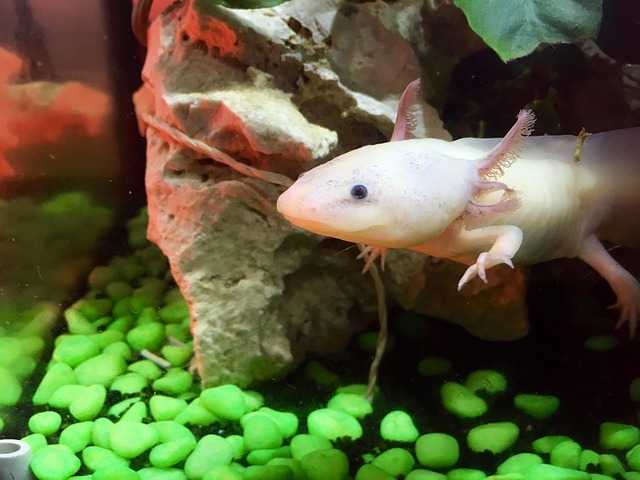The axolotl, Ambystoma mexicanum, is a paedomorphic salamander closely related to the tiger salamander. Axolotls are unusual among amphibians in that they reach adulthood without undergoing metamorphosis. Instead of taking to the land, adults remain aquatic and gilled.

Conservation status: Critically Endangered (Population decreasing) Encyclopedia of Life
Scientific name: Ambystoma mexicanum
Higher classification: Mole salamander
Family: Ambystomatidae
Kingdom: Animalia
Order: Urodela
Phylum: Chordata
List of facts
The axolotl latin name is Ambystoma mexicanum
The species is named after the Aztec deity Xolotl, who transformed himself into an axolotl
The axolotl is a paedomorphic salamander closely related to the tiger salamander
Axolotls can measure between 6 – 18 inches long.
They are listed as critically endangered in the wild, with a decreasing population of around 50 to 1,000 adult individuals
Axolotls are used extensively in scientific research due to their ability to regenerate limbs, gills and parts of their eyes and brains
Axolotl can regrow the same limb up to 5 times. Then it stops.
Axolotls were also sold as food in Mexican markets
Axolotls were a staple in the Aztec diet
The axolotl is carnivorous, consuming small prey such as mollusks, worms, insects, other arthropods, and small fish in the wild.
The normal wild-type animal is brown/tan with gold speckles and an olive undertone
The five more common mutant colors are leucistic (pale pink with black eyes), golden albino (golden with gold eyes), xanthic (grey with black eyes), albino (pale pink/white with red eyes) which is more common in axolotls than some other creatures, and melanoid (all black/dark blue with no gold speckling or olive tone
The axolotl is native only to the freshwater of Lake Xochimilco and Lake Chalco in the Valley of Mexico.
Axolotl retain their gills, but also have lungs that are fully functional.
The Axolotl is also over 1,000 times more resistant to cancer than mammals.
Axolotl keep their juvenile characteristics until adulthood without undergoing many phases of change.
Axolotl reaches sexual maturity at the age of 12 months.
Axolotls in the wild live between 10 and 12 years.
The female lays between 300 and 1000 eggs
After only two weeks the eggs hatch and the babies are left on their own.
In 2020, it was announced that the axolotl will be featured on the new design for Mexico’s 50-peso banknote, along with images of maize and chinampa
